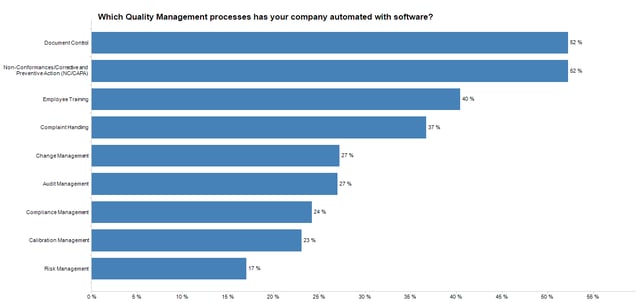In a recent interview with Clint Belinsky, VP Global Quality at Jabil, LNS discussed revolutionizing quality management and some keys to achieving excellence. A key point? Streamlined processes, systems, and technology are important but without the right people and quality-driven culture, tangible ongoing improvement is difficult to sustain.
When specifically talking about audits in the context of culture Belinsky said:
"Generally people don’t like audits but not at Jabil. At Jabil, audits are very upbeat and not done with a “got you” attitude."
Organizations are challenged with overcoming the “quality as a department” mentality and translating quality values that contribute to strategic objectives into every day behavior. This behavior manifests in actions proactively targeted to guard against undesirable outcome, namely quality issues.
Enterprise Quality Management Software (EQMS) is a formidable tool for automating a corporate, facility, process and ad-hoc quality management audit and assessment process. There are tangible benefits like efficiency (protocols, workflows, notifications and interoperability), consistency (global, single platform, common user interface), visibility (findings, closed-loop, reporting and close-out analytics) and much more. These benefits are crucial to delivering better performance and insight for the organization but there’s more to auditing in EQMS, specifically when learning and culture are considered and functionality is effectively leveraged to this end.
In this post we will consider two key elements that deliver significant value at the point of consumption but also beyond as they also serve to feed, improve, and persist corporate memory of audit best practices, share learning from actual outcome, and analyze immediate findings (and actions)—effectively leaning into and learning from audits in EQMS. We will focus on:
- Guidance & Context Rich Information
- Audit Findings and Analysis

Guidance & Context Rich Information
Despite the fact that audits are likely to touch, investigate, assess, and document performance in every quality management system process in order to ensure compliance/conformance and drive improvement, it appears mid-table with regard to its automation using software.
This means over two thirds of companies are still taking a paper-based approach, which doesn’t effectively support transferring knowledge. Auditing is a skill, and the skillset of the best auditors is fundamentally supported by an inquiring mind and deep experience. Formal external and internal training can provide valuable learning, but most people will tell you that the real learning was shared by veterans and learned on the job.
An EQMS is particularly well suited to capturing and delivering veteran and/or expert auditing knowledge at the immediate point of need. Whether in a protocol or template/library, where a specific compliance or conformance element of the QMS is being assessed or in a general area of assessment, the knowledge that came before (recent or not) can be accessed before or at the specific time of the element being audited. All this requires is for the guidance to be captured proactively, validated, and centrally published/embedded/uploaded/linked.
This guidance could be question framing for the auditee, investigative flows, images of what a work station should look like, a link to a specific live procedure for reference, and much more. This provision is typically the work of the most experienced and valuable auditing minds in the organization and with a modest investment of time has benefit for an entire organization, potentially on a global scale.
Audit Findings and Analysis
Every finding and observation from an audit regardless of scope has value—period. What we know is that two thirds of organizations are likely operating in a situation where findings are documented, discussed in closing meetings, addressed (or not) depending on severity (or potential opportunity for improvement) and then are preserved for posterity in a hard copy report, or perhaps only slightly better than that, in an electronic document somewhere on a secure server. This is a tragedy of potentially epic proportion.
The value represented by each individual finding regardless of where it was discovered in the organization has the potential to help prevent it occurring elsewhere or trigger innovation that leads to an elegant, cost effective control for all, granted that simply recording in the audit module of an EQMS is in and of itself not leveraging the information. There’s more to it than that, of course.
Even if it’s in the context of a management review, easy access and analysis of findings from a kaleidoscope of audits across multiple compliance and process scopes at a single facility has the potential to inform those not directly associated with the audit. Educate them and drive proactive behavior for improvement. Then scale this up and formalize reviews and the value increases dramatically. It’s effective organizational learning. And the data is captured regardless – it is occurring today/tomorrow/next week/month in every company location.
There are other mechanisms available in EQMS that drive learning; we focused on these two because they are commonly overlooked and leverage knowledge already in the business, but with cultural implications. It’s important to use the right tools and technology, but as Belinsky inferred, an audit is an opportunity, not a way to “get” a perpetrator; quite the opposite. In fact, it’s an opportunity to improve and drive organizational learning and leveraging that knowledge demonstrates a commitment to the desired cultural values.